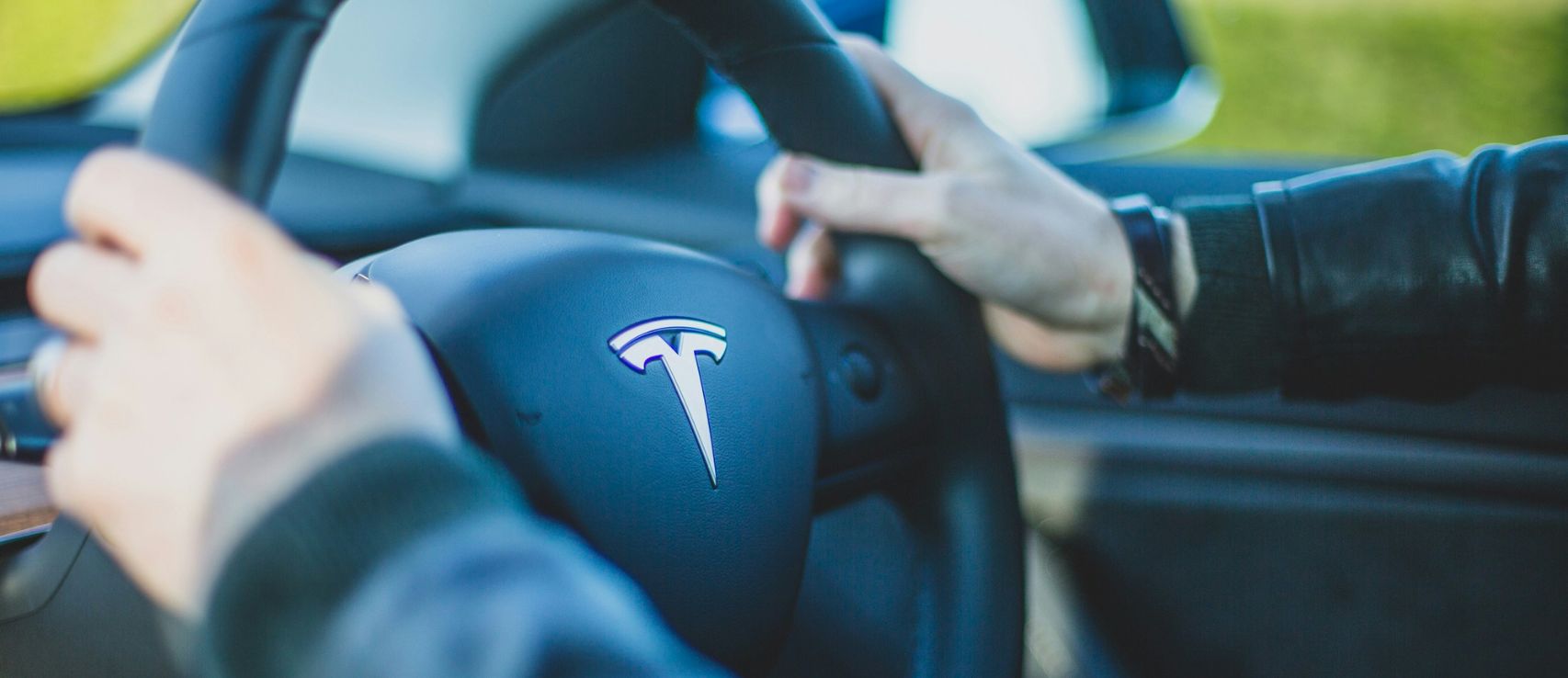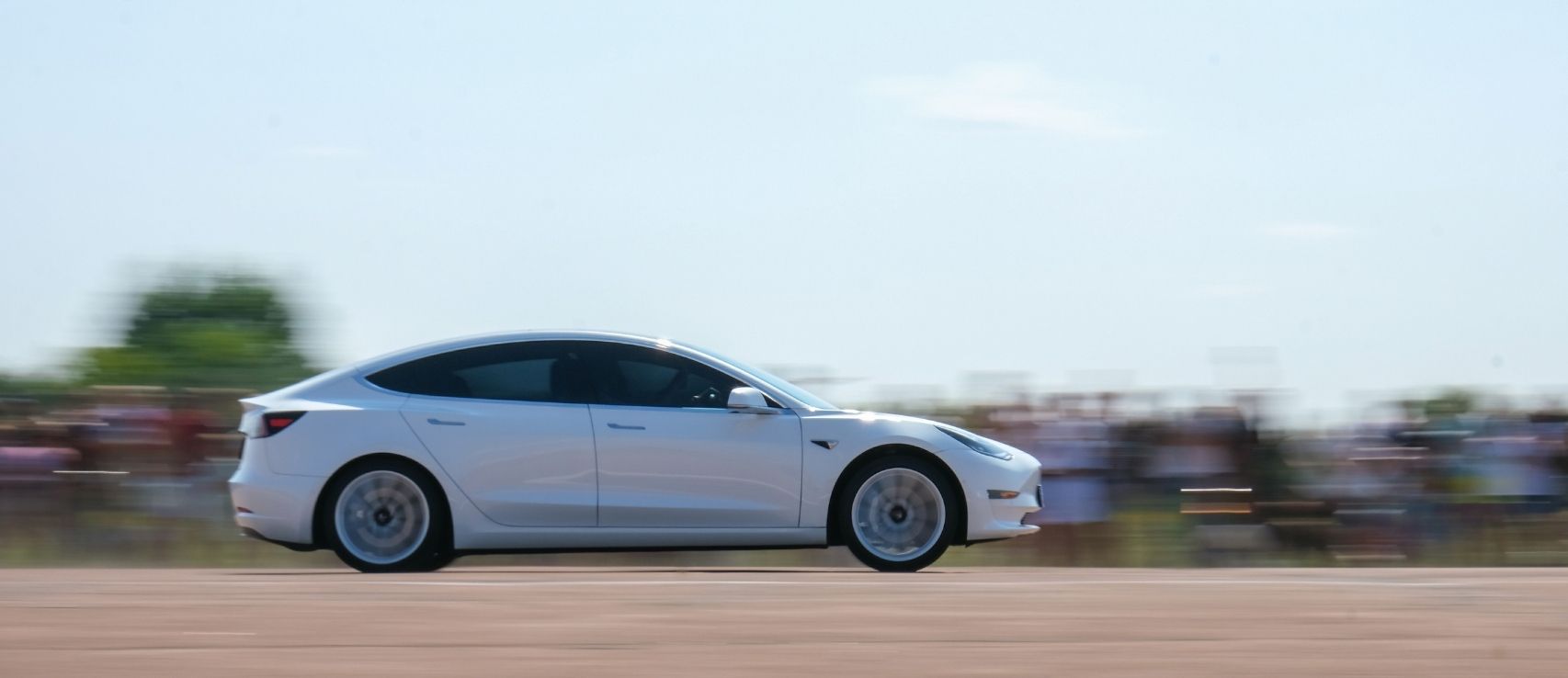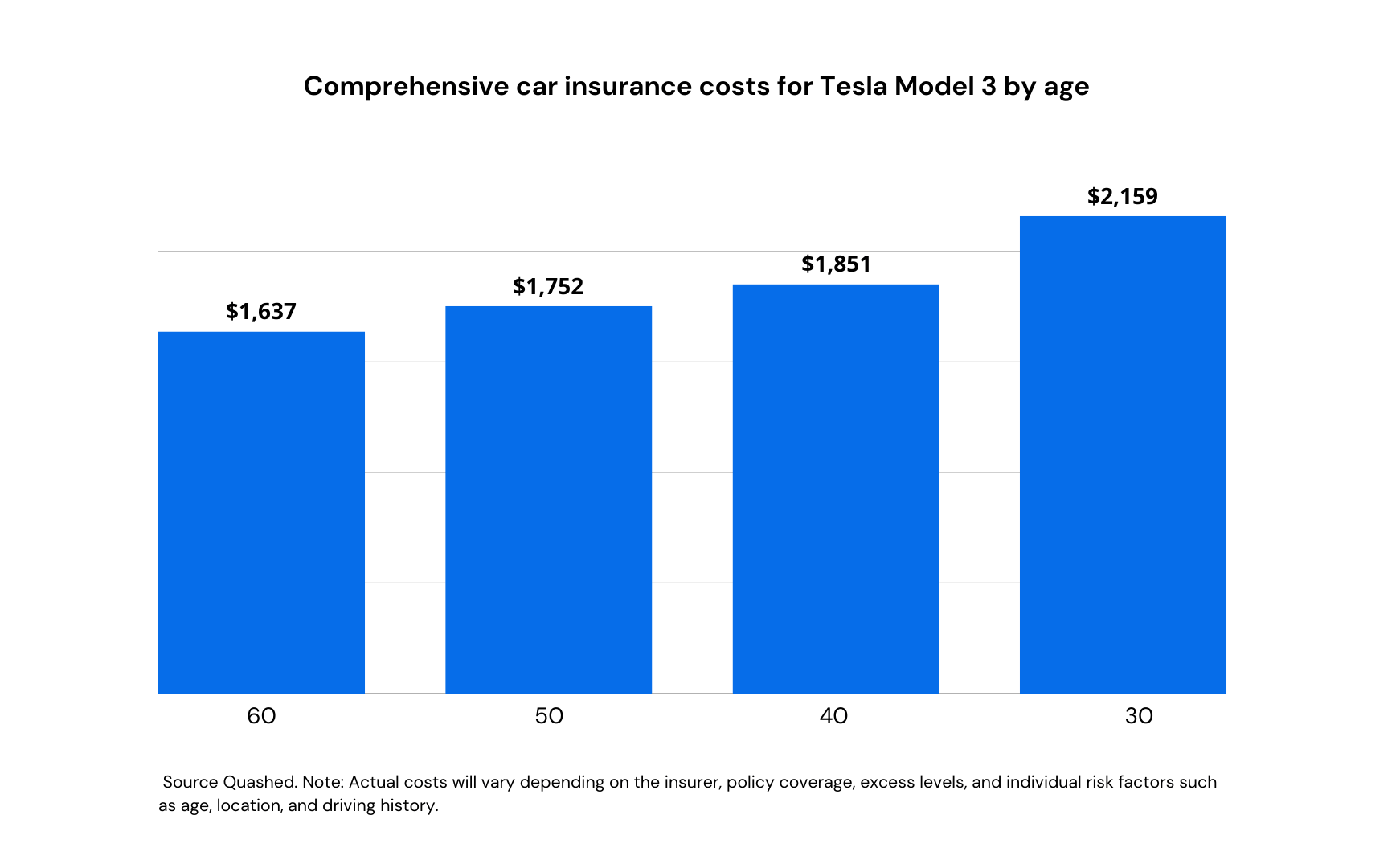
Tesla’s popularity in New Zealand has surged. According to the Electric Vehicle Database, there were 12,354 Teslas registered in 2022—a number that has now climbed to 18,816, marking a 52% increase. And with more Teslas on the road, the need for good insurance has too. As EVs become more common, sussing out Tesla insurance costs – and how they stack up against other electric cars like the BYD Atto and Nissan Leaf – is crucial. In this guide, we break down current Tesla insurance prices in New Zealand and explore the key factors driving these costs.
Tesla cars in NZ
Before we jump into the insurance options available for Tesla cars in New Zealand, let's take a quick look at their lineup of vehicles.
The Tesla lineup includes the Model 3 (compact sedan), Model S (discontinued), Model X (discontinued), Model Y (small SUV), and the Cybertruck (not yet available in New Zealand).
The Model 3 is the most affordable Tesla, starting at $63,900. It falls under the compact sedan category. The performance Model 3 is priced at $84,900 and includes upgraded features such as all-wheel drive, a 514 km range, and 3.7-second acceleration from 0–100 km/h.
When comparing the performance models of the Model 3 and Model Y, there are some key distinctions in driving dynamics and purpose:
The higher-spec performance Model 3 focuses on delivering a sportier, more agile experience with its lower profile and faster acceleration, going from 0–100 km/h in just 3.1 seconds. It offers a slightly higher range of 528 km, making it ideal for those seeking speed and long-range capability in a sleek sedan package.
The Model Y performance, while also being quick with a 3.7-second 0–100 km/h acceleration, prioritises space and utility. It has a range of 514 km and is built with a higher stance and more cargo room, perfect for drivers who want SUV versatility without sacrificing speed and power.
Both models offer all-wheel drive and the capability to handle a variety of driving conditions, but the choice ultimately depends on whether you prefer the nimbleness of a sedan or the practicality of an SUV.

Is Tesla insurance available in NZ?
You might have heard about Tesla's own car insurance, making waves overseas and maybe giving other insurers a fright about Elon's next move... but unfortunately, it's not available here in New Zealand.
Currently, California and Texas are the pilot states, in partnership with State National, where the programme is available. A key difference is that Tesla owners don’t need to install any additional devices in the vehicle for it to work; it relies on real-time data to price insurance risk and assess customer service. Pricing is based on six factors: (1) Driving behaviour, (2) Distance travelled, (3) Vehicle type, (4) Home location, (5) Level of cover selected, and (6) Multi-policy discounts.
Tesla New Zealand references an InsureMyTesla programme in partnership with Vero Insurance New Zealand Limited. This should not be confused with the Tesla Insurance programme available in the US. Unfortunately, the level of online service one might expect from Tesla isn’t present here, as there is only an email address and phone number listed for further information—no online quoting is available.
The locally available InsureMyTesla cover, in partnership with Vero, offers the following benefits: New car replacement (up to 24 months or 40,000 km), 20% standard excess reduction after 90 days, cover for loss or damage to your home charging equipment, full glass coverage including the panoramic roof, and optional rental car cover.
Standout features include the 24-month or 40,000km new car replacement benefit (most insurers offer this only for cars under 12 months old, except Tower, which has a comparable benefit) and cover for loss or damage to home charging equipment. Repair guarantees from approved repairers are also included. However, your home or contents insurance should provide protection for home charging equipment.
Want to find Tesla insurance for your needs? Compare providers with Quashed in just a few clicks.
Tesla insurance costs in NZ: how your location affects what you pay
Using our data, we assessed the lowest, average, and highest insurance premium costs for the Tesla Model 3 and Y. The assumptions and results are below:
Vehicle: Tesla Model 3 and Model Y
Sum insured: $45,000 for Model 3, $55,000 for Model Y
Excess: $500
Driver profile: Male, aged 35
Policy type: Comprehensive car insurance
Tesla Model 3 insurance costs
Region | Lowest premium $ | Average premium $ | Highest premium $ | Difference % |
|---|---|---|---|---|
Auckland | $2,559 | $2,753 | $2,987 | 17% |
Wellington | $1,969 | $2,016 | $2,089 | 6% |
Christchurch | $2,166 | $2,561 | $2,811 | 30% |
Tesla Model Y insurance costs
Region | Lowest premium $ | Average premium $ | Highest premium $ | Difference % |
|---|---|---|---|---|
Auckland | $2,782 | $3,144 | $3,525 | 27% |
Wellington | $2,167 | $2,293 | $2,460 | 14% |
Christchurch | $2,354 | $2,951 | $3,317 | 41% |
Source: Quashed. Note: One-year costs are presented. Actual costs will vary depending on the insurer, policy coverage, excess levels, and individual risk factors such as age, location, and driving history.
What can we see in the data?
Analysis of insurance costs for the Tesla Model 3 and Model Y across Auckland, Wellington, and Christchurch highlights significant regional differences.
Auckland has the highest insurance premiums among the three cities. The Model 3 premiums range from $2,559 to $2,987, reflecting a 17% difference, while the Model Y starts at $2,782 and peaks at $3,525—a 27% increase from lowest to highest cost. Auckland’s dense traffic and higher vehicle values likely contribute to these elevated premiums.
Wellington consistently shows the lowest insurance costs. The Model 3 ranges from $1,969 to $2,089, with only a 6% variation, while the Model Y falls between $2,167 and $2,460 (14% difference). This suggests that insurers view Wellington as a lower-risk region for Tesla drivers.
Christchurch sees the widest range in premiums, particularly for the Model Y, where costs span from $2,354 to $3,317—a 41% jump. The Model 3 also has a 30% difference, indicating greater pricing variability compared to Auckland and Wellington. Factors like repair shop availability and regional risk assessments may play a role in these fluctuations.
These differences underscore how location impacts Tesla insurance pricing. However, where you live is only one piece of the puzzle. Age is another major factor that influences premiums. Younger drivers often face higher insurance costs due to a higher likelihood of claims, while experienced drivers in their 30s, 40s, and 50s typically benefit from lower rates.
But how much does age influence Tesla insurance costs? Let’s break down how premiums change across different age groups.
Does age impact Tesla insurance costs?
Insurance premiums for the Tesla, like other vehicles, vary based on several factors, and age is a major one. Younger drivers, particularly those in their 20s and early 30s, typically face higher insurance costs due to perceived risk, while more experienced drivers in their 40s, 50s, and 60s often benefit from lower premiums
To illustrate this, we've modelled a scenario on Market Scan:
Vehicle: Tesla Model 3
Sum insured: $45,000
Excess: $500
Driver profile: Female
Policy type: Comprehensive car insurance
Location: Whitby, Porirua

What can we see in the data?
The data clearly highlights how age impacts Tesla Model 3 insurance costs, with younger drivers facing significantly higher premiums compared to older drivers.
A 30-year-old driver pays the highest premium in this comparison at $2,159 per year
By age 40, the premium drops to $1,851 reflecting a 14% decrease from age 30.
At age 50, the cost reduces further to $1,752, a 5% decrease from age 40.
The lowest premiums are for 60-year-old drivers, who pay $1,637, which is 24% lower than what a 30-year-old pays.
This steady decline in premiums aligns with insurance risk models, which typically reward more experienced drivers with lower rates. As drivers age, they generally develop safer driving habits, accumulate longer claims-free records, and present lower statistical risk to insurers.
Why age matters for Tesla Insurance
For Teslas, this pricing trend is even more pronounced because:
Higher repair costs: Teslas require specialised repair shops and expensive parts, making insurers cautious about covering inexperienced drivers who might be more prone to accidents.
Advanced technology: Features like Autopilot and full self-driving could play a role in reducing claims, but younger drivers may be less familiar with how to use them effectively.
Risk assessment models: Insurers base pricing on historical claim data, and younger drivers statistically file more claims.
Your exact age significantly impacts Tesla insurance costs: As seen in the data, the difference between being 30 and 60 is over $500 per year—a substantial reduction just based on age.
Your age is a key factor in determining how much you’ll pay for Tesla insurance. While younger drivers face higher costs, maintaining a clean driving record and adjusting policy settings like excess can help reduce premiums over time; it is also fundamentally important to ensure that your sum insured amount is very accurate.
How much should I insure my Tesla for?
The sum insured for your Tesla should reflect the current market value of the vehicle, including any upgrades and modifications. For newer Tesla models, consider the replacement cost, accounting for depreciation, repair expenses, and parts availability.
If you’re looking at a used Tesla, it’s recommended to try Trade Me’s car valuation tool, which is free of charge. This simple, easy-to-use valuation tool helps you determine the approximate market value of your car by analysing recent sales data of similar vehicles listed on the platform.
By entering key details like make, model, year, and mileage, the tool generates a value range to give you an idea of what your car might be worth in today’s market. This tool is particularly useful when you're buying, selling, or insuring a vehicle like the Tesla Model 3.
Supercharging your Tesla insurance search with Quashed
With Quashed, you can compare Tesla insurance quotes easily, skipping the hassle of multiple websites and endless forms.
Our platform provides real-time quotes, personalised options, and an easy way to manage all your policies.
Join over 45,000 Kiwis already using Quashed to make smarter insurance decisions—will you be next?
Further reading
Looking for more insights on car insurance? Check out these related guides:
Electric Vehicles: Do They Cost More to Insure?: A deep dive into EV insurance v pertol vehicles.
Comparing Insurance Costs for Top Cars: See insurance costs of popular vehicles in New Zealand..
Why Is Car Insurance So Expensive?: Breaking down why insurance premiums are rising.
Smart Ways to Slash Your Car Insurance: Practical tips to keep your Tesla insurance costs under control.
Cheapest Versus Best Car Insurance in NZ: How to strike the right balance between cost and coverage.
Key Considerations with Car Insurance: Important things to weigh up before choosing a policy.
Car Insurance Guide: A complete breakdown of car insurance in New Zealand, from policy types to claims.
FAQs
Is insurance higher on a Tesla?
Yes, it can be, as we've shown in our blog, Electric Vehicles: Do They Cost More to Insure? Tesla insurance in New Zealand can be considered expensive compared to vehicles powered by internal combustion engines due to various factors. The advanced technology and high cost of Tesla vehicles often lead to higher collision repair and replacement costs, which insurers take into account when calculating premiums. Additionally, the limited availability of specialised Tesla repair shops can also contribute to higher insurance costs.
Do insurers cover the glass roof on the Tesla?
Yes. Insurers we’ve asked confirm that this is covered as part of their standard glass cover within their comprehensive policy. Many insurers also offer the option to remove the excess for windscreen/glass claims.
How can I reduce my Tesla insurance premiums?
There are several ways to lower the cost of insuring a Tesla:
Shop around: Get quotes from multiple insurers to find the best deal.
Increase your excess: Opting for a higher excess can reduce your premium, but make sure it's an amount you're comfortable paying in the event of a claim.
Maintain a clean driving record: No claims and no traffic violations often lead to discounts.
Bundle Policies: Some insurers offer discounts if you combine car insurance with home or contents insurance.
Is Tesla Auto Insurance available in New Zealand?
No, Tesla Auto Insurance (offered in some countries like the US) is not available in New Zealand. However, Quashed allows you to compare Tesla insurance options from multiple providers, ensuring you get the best available coverage.
Are Tesla batteries covered by insurance?
Yes, comprehensive car insurance typically covers accidental damage to your Tesla’s battery. However, normal wear and tear or degradation over time is not covered. Some policies also exclude coverage for battery damage caused by improper charging, so reviewing your policy terms is crucial.
Are repair costs higher for Teslas in New Zealand?
Yes, Tesla repairs in NZ don’t come cheap. With specialised materials, advanced tech, and a limited number of certified repairers, fixing a Tesla can cost more and take longer than a standard petrol car. Many parts have to be imported, which means longer wait times—and insurers price that risk into your premium.
Does my location affect Tesla insurance premiums?
Absolutely. Where you live can impact how much you pay for Tesla insurance. High-traffic areas like Auckland tend to have higher premiums due to increased accident risk, while regions with fewer Tesla-certified repairers may also see higher costs. On the flip side, if you’re in a lower-risk area with less congestion and crime, you might score a cheaper premium.
What should I check when buying a second-hand Tesla in NZ?
Buying a used Tesla? Smart move—but not all second-hand Teslas are equal. Check the battery health, as degradation can affect range and long-term value. Make sure the vehicle history is clean, including any accident repairs, and confirm whether it was NZ-new or imported (some insurers price imports differently). Tesla’s software updates and warranties also vary between older models, so check if features like Full Self-Driving (FSD) or premium connectivity are transferable.
This article provides general information only and does not constitute insurance or financial advice. Insurance policies vary between providers, and you should check with your insurer or a licensed adviser for guidance specific to your situation. For full details, refer to Quashed’s terms and conditions.

